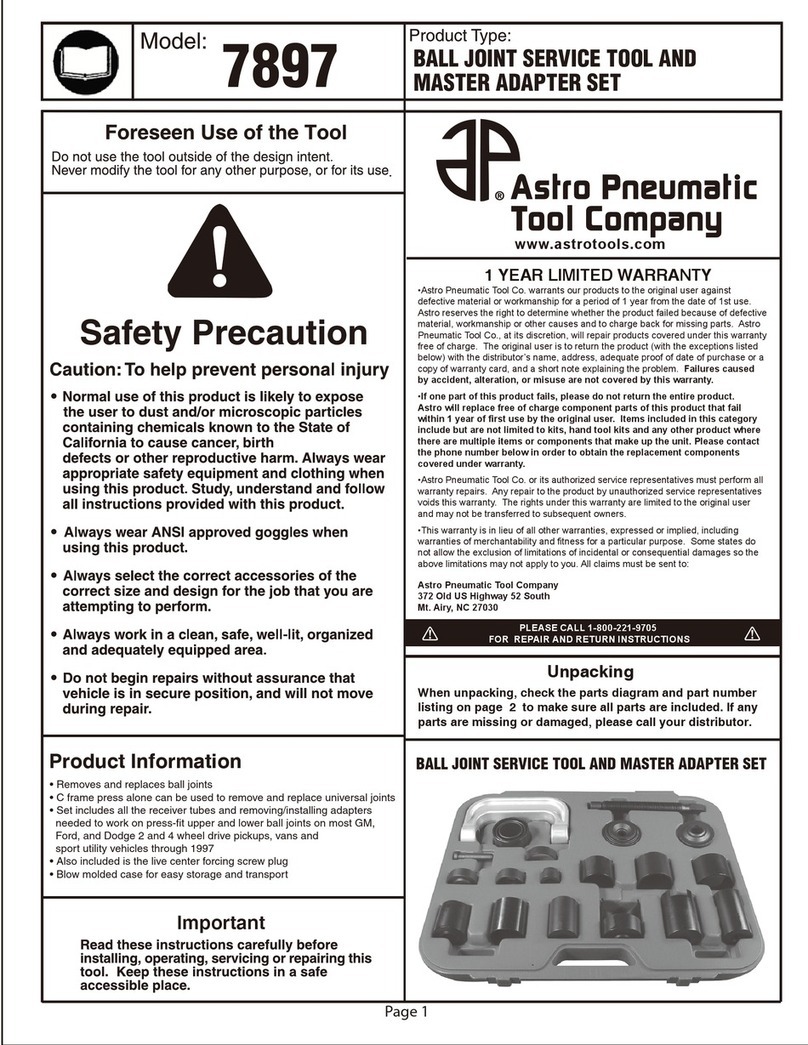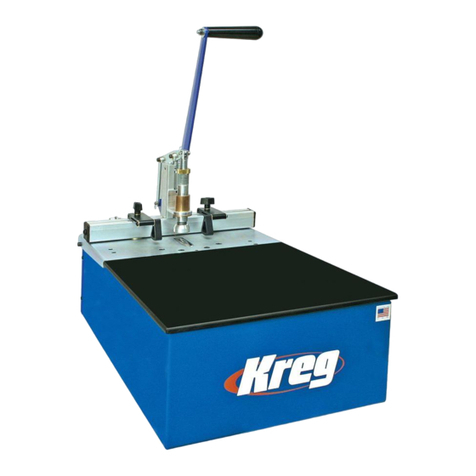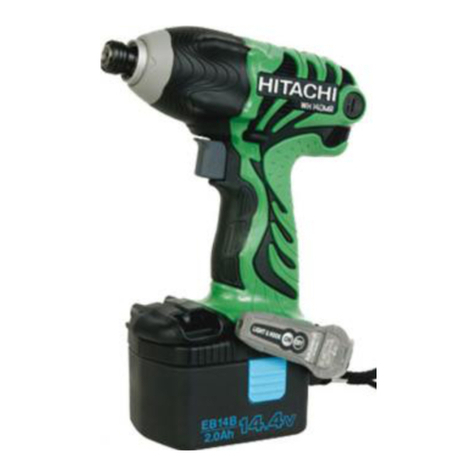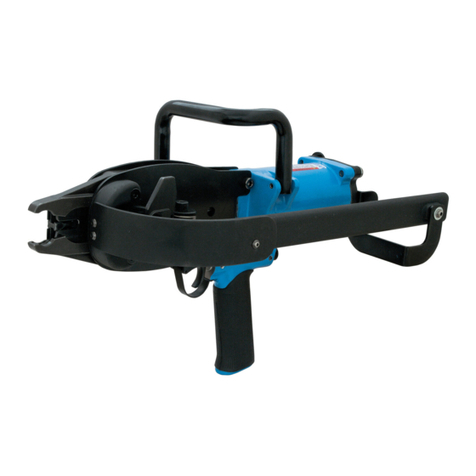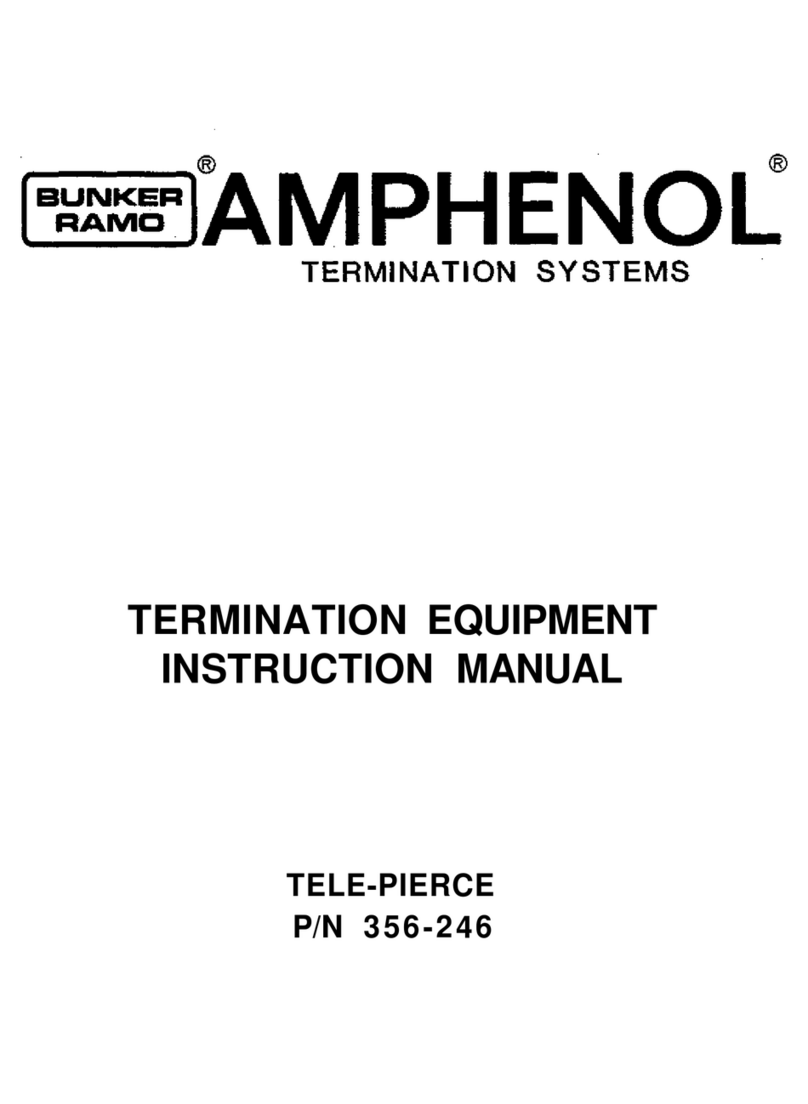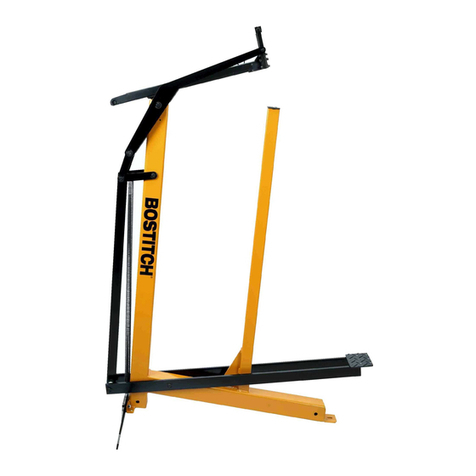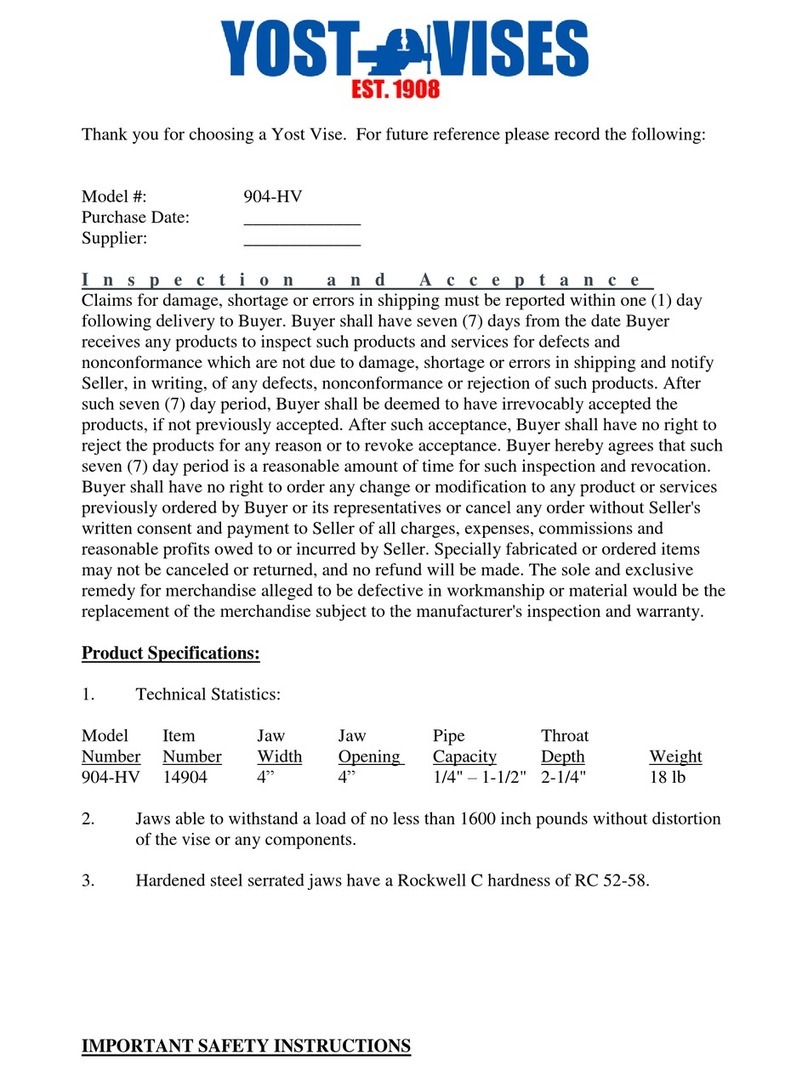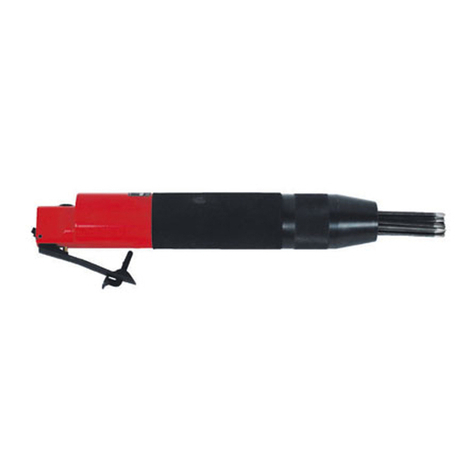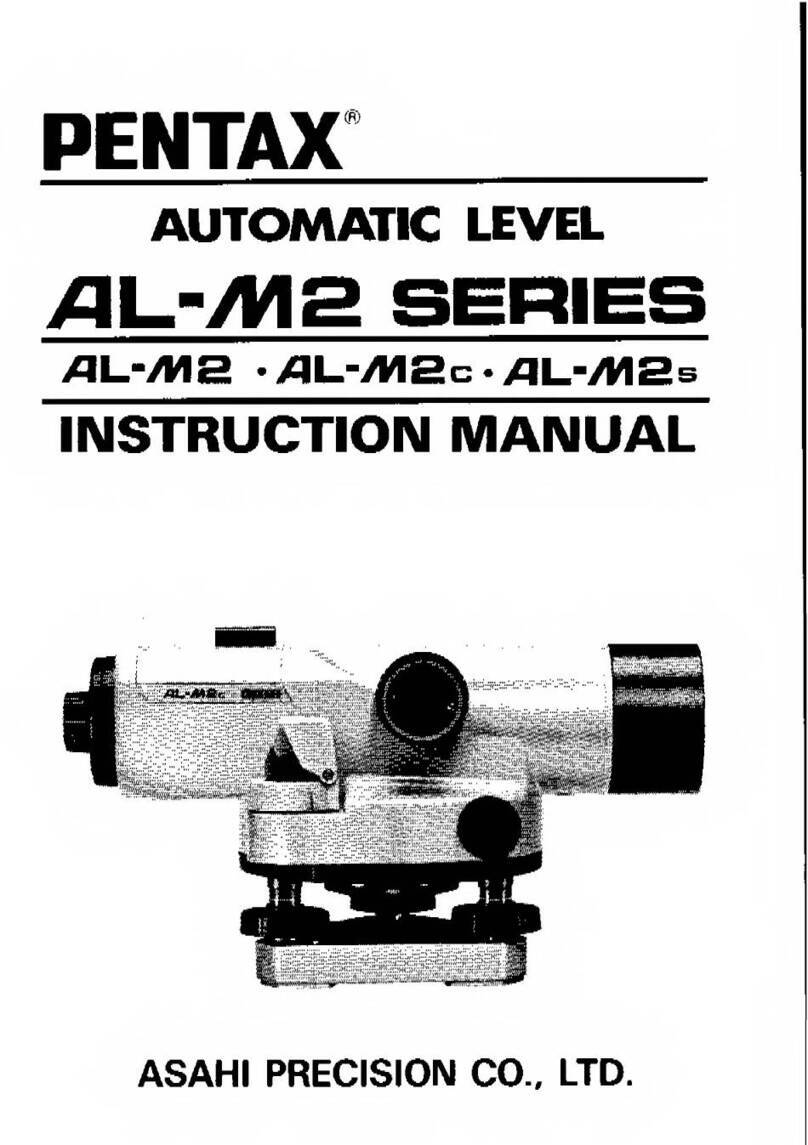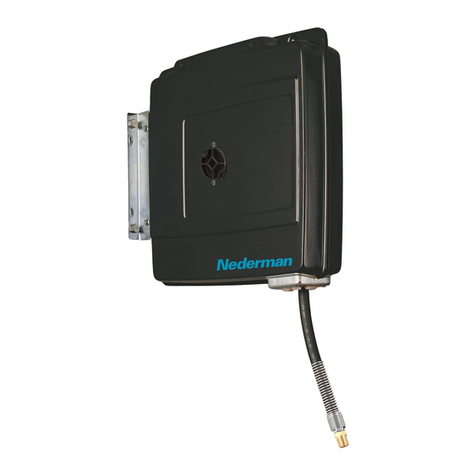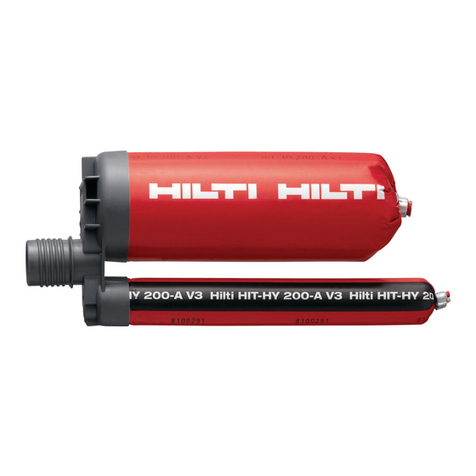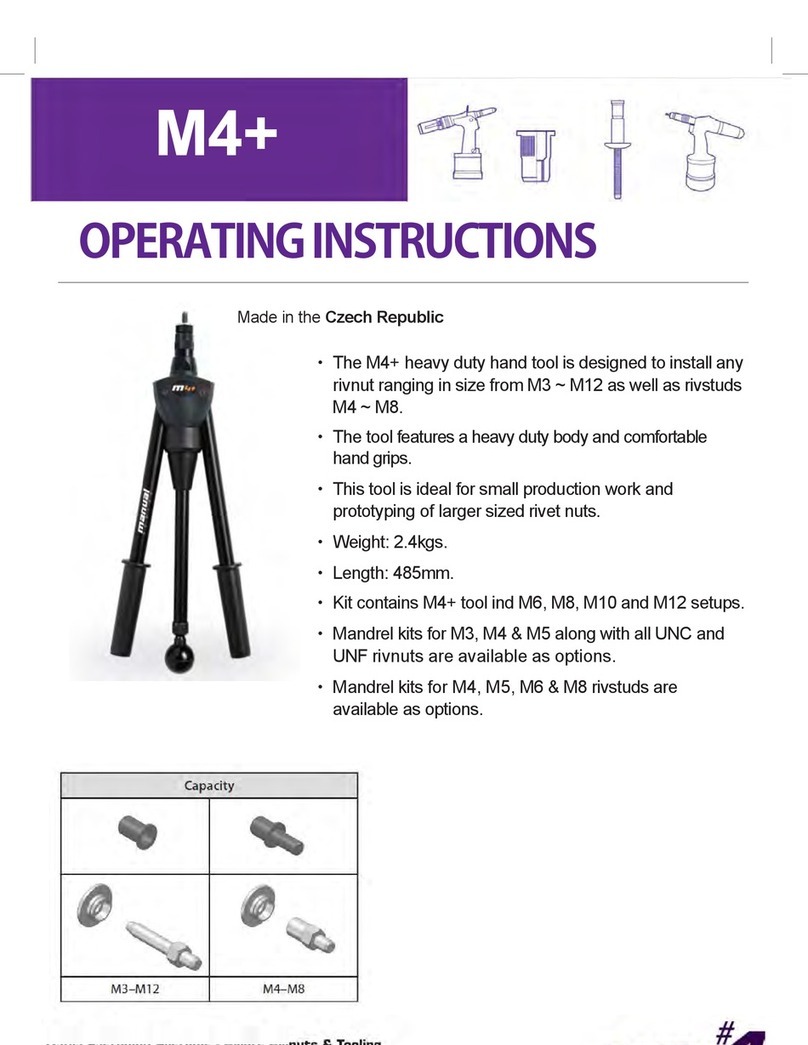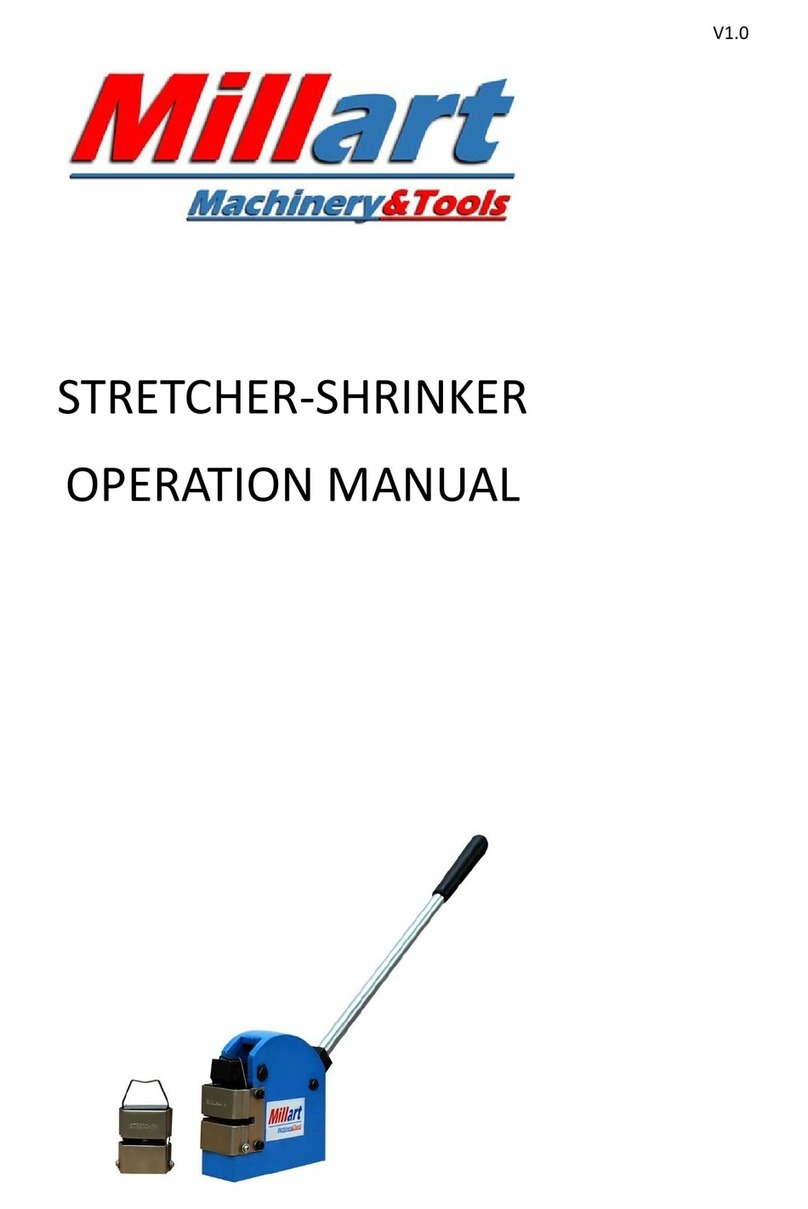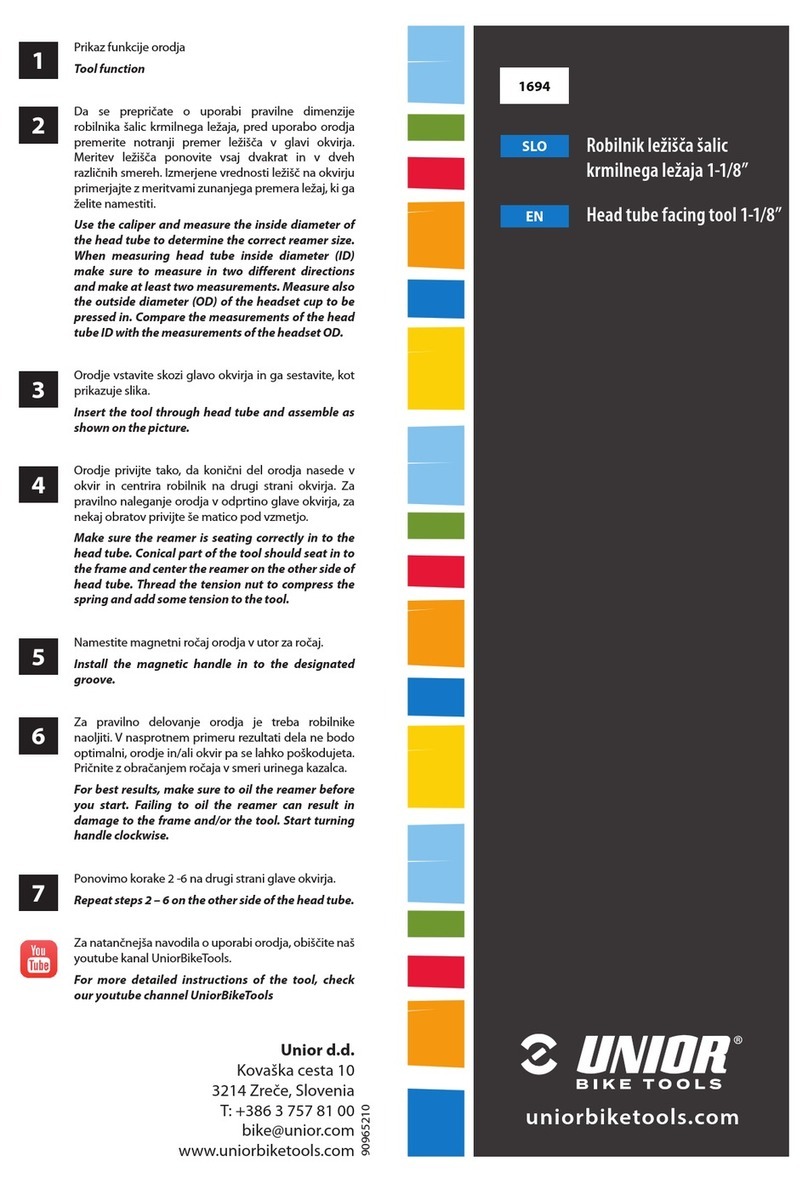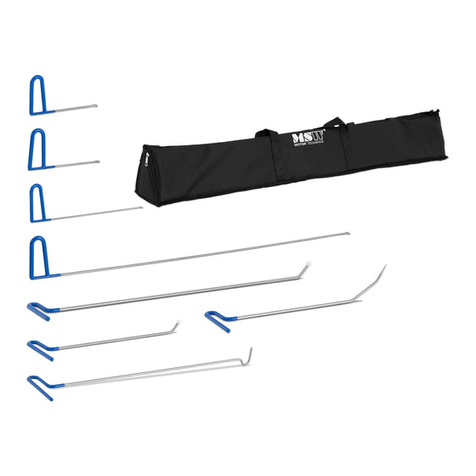Beechcraft Beech 95 2017 Quick setup guide

Selkirk College IATPL Program Manual
Beech 95 POH Effective September 1, 2005 Appendix 14 - 1
Beech 95 Pilot Information Manual
For the exclusive use of students in the Selkirk College Professional Aviation Program
Copyright 2005 –revised 2010

Selkirk College IATPL Program Manual
Beech 95 POH Effective September 1, 2005 Appendix 14 - 2

Selkirk College IATPL Program Manual
Beech 95 POH Effective September 1, 2005 Appendix 14 - 3

Selkirk College IATPL Program Manual
Beech 95 POH Effective September 1, 2005 Appendix 14 - 4
Beechcraft Travelair Pilot Information Manual
The official Pilot Operating Handbook for the Beechcraft Travelair airplanes is in
the aircraft. This section of appendix 14 constitutes an information manual for students in
the Selkirk College Professional Aviation Program to use when learning to fly the
Travelair and for planning flights.
All information provided in this information manual is taken from the following
Beechcraft Publications:
1. Beechcraft Travelair D95A Owner’s Manual
2. Beechcraft Travelair E95 Owner’s Manual
3. Beechcraft Travelair Shop Manual
Copies of the above manuals are available in the Selair Resource Center.
This manual is also based on actual experience operating the airplanes for 25+
years at Selkirk College.
This Information Manual is for use with both GSAK and FXFG. GSAK is a 1965
D95A. FXFG is a 1968 E95. The procedures and performance of the two airplanes is
identical except where noted in this book. The two aircraft have very similar systems but
there are differences, especially in the electric and vacuum systems. This information
manual explains the differences.
This information manual has been organized according to the nine-section POH
format that has become the standard in the aviation industry. This should assist pilots to
locate the required information quickly and easily.

Selkirk College IATPL Program Manual
Beech 95 POH Effective September 1, 2005 Appendix 14 - 5
Contents:
General................................................................................Section 1
Limitations..........................................................................Section 2
Emergency Procedures........................................................Section 3
Normal Procedures..............................................................Section 4
Performance .......................................................................Section 5
Weight and Balance............................................................Section 6
Airplane & Systems Description and Operation.................Section 7
Aircraft Handling, Servicing, and Maintenance.................Section 8
Supplements........................................................................Section 9

Selkirk College IATPL Program Manual
Beech 95 POH Effective September 1, 2005 Appendix 14 - 6
Table of Contents:
Section 1 –General............................................................................................................. 9
Three View...................................................................................................................... 9
Introduction................................................................................................................... 10
Descriptive Data........................................................................................................ 10
GSAK.................................................................................................................... 10
FXFG (modified under STC: SA00722CH)......................................................... 10
Symbols, Abbreviations and Terminology................................................................... 13
Section 2–Limitations...................................................................................................... 16
Introduction to Section 2............................................................................................... 16
Design Limitations........................................................................................................ 16
Stall Speeds................................................................................................................... 16
Airspeed Indicator Markings ........................................................................................ 18
Power Plant Limitations................................................................................................ 18
Power Plant Instrument Markings ................................................................................ 19
Weight Limits ............................................................................................................... 19
Center of Gravity Limits............................................................................................... 19
Maneuver Limits........................................................................................................... 20
Flight Load Factor Limits............................................................................................. 20
Kinds of Operation Limits............................................................................................ 20
Fuel Limitations............................................................................................................ 20
Other Limitations.......................................................................................................... 22
Flap Limitations........................................................................................................ 22
Gear Limitations ....................................................................................................... 22
Cowl Flap Limitations .............................................................................................. 22
Placards......................................................................................................................... 22
Section 3 –Emergency Procedures................................................................................... 23
Introduction to Section 3............................................................................................... 23
Airspeeds for Emergency Operation............................................................................. 23
Emergency Checklists................................................................................................... 23
Amplified Engine Failure Procedures........................................................................... 23
Simulated Zero Thrust .............................................................................................. 24
Section 4 –Normal Procedures......................................................................................... 25
Introduction to Section 4............................................................................................... 25
Speeds for Normal Operation ....................................................................................... 25
Normal Checklists......................................................................................................... 26
Amplified Procedures ................................................................................................... 26
Preflight..................................................................................................................... 26
Starting Engines........................................................................................................ 26
Taxiing...................................................................................................................... 26
Runup........................................................................................................................ 27
Normal Takeoff......................................................................................................... 27
Short Field Takeoff................................................................................................... 28
Soft or Rough Field Takeoff..................................................................................... 28
Climb......................................................................................................................... 28

Selkirk College IATPL Program Manual
Beech 95 POH Effective September 1, 2005 Appendix 14 - 7
Cruise........................................................................................................................ 29
Holds......................................................................................................................... 29
Stalls.......................................................................................................................... 30
Descent...................................................................................................................... 30
Normal Approach and Landing ................................................................................ 30
Short Field Approach and Landing........................................................................... 31
Soft or Rough Field Approach and Landing............................................................. 31
Crosswind Landing................................................................................................... 32
Balked Landing (IFR Missed Approach).................................................................. 32
Section 5 –Performance................................................................................................... 34
Introduction to Section 5............................................................................................... 34
Airspeed Calibration Chart........................................................................................... 36
Time to Climb at Vy –Maximum Continuous Power.................................................. 43
Maximum Rate of Climb.............................................................................................. 45
Time, Fuel, and Distance to Climb (4200 lb) ............................................................... 46
Time, Fuel, and Distance to Climb (3500 lb) ............................................................... 47
Beech 95 Cruise Performance Chart............................................................................. 48
B95 Cruise- 70% 2400 rpm .......................................................................................... 49
Single Engine Cruise Performance............................................................................... 50
Section 6 –Weight and Balance....................................................................................... 52
Introduction to Section 6............................................................................................... 52
Weight and Balance Procedure................................................................................. 53
Weight Limits ........................................................................................................... 55
Center of Gravity Limits........................................................................................... 55
Section 7 –Airplane Systems Description & Operation .................................................. 57
Introduction to Section 7............................................................................................... 57
Airframe........................................................................................................................ 57
Cabin Doors and Windows....................................................................................... 57
Baggage Compartments............................................................................................ 57
Flight Controls.............................................................................................................. 58
Flaps.......................................................................................................................... 59
Control Locks............................................................................................................ 59
Power Plants.................................................................................................................. 60
Oil System................................................................................................................. 60
Starters ...................................................................................................................... 60
Cowl Flaps................................................................................................................ 61
Propellers ...................................................................................................................... 61
Fuel System................................................................................................................... 62
Gear............................................................................................................................... 64
Instrument Panel ........................................................................................................... 66
Ignition Panel............................................................................................................ 66
Main Panel................................................................................................................ 67
Pilot Sub-panel.......................................................................................................... 67
Power Gauge Panel................................................................................................... 68
Center Console.......................................................................................................... 68
Power Plant Controls ............................................................................................ 68

Selkirk College IATPL Program Manual
Beech 95 POH Effective September 1, 2005 Appendix 14 - 8
Trim Control Wheels ............................................................................................ 68
Panel Light Rheostats ........................................................................................... 69
Alternate Air Controls........................................................................................... 69
Nose Gear Indicator.............................................................................................. 70
Engine Instrument Panel........................................................................................... 70
Avionics Circuit Breaker Panel ................................................................................ 70
Avionics........................................................................................................................ 71
HSI (PN101) ............................................................................................................. 71
RMI........................................................................................................................... 71
Gyro Slaving System ................................................................................................ 71
Heater and Ventilation System ..................................................................................... 72
Electric System ............................................................................................................. 76
Alternators, Voltage Regulators, and Ammeters...................................................... 76
Busses ....................................................................................................................... 77
Batteries .................................................................................................................... 77
Circuit breakers and Fused Switches........................................................................ 77
Over-Voltage Warning.............................................................................................. 78
Alternator Out Lights................................................................................................ 78
Vacuum System............................................................................................................ 82
Brake System................................................................................................................ 83
Cabin Ventilation.......................................................................................................... 84
Section 8 - Aircraft Handling, Servicing, and Maintenance............................................. 86
Towing...................................................................................................................... 86
CAUTION................................................................................................................. 86
External Power.......................................................................................................... 86
Landing Gear ............................................................................................................ 86
Brakes ....................................................................................................................... 86
Light Bulbs................................................................................................................ 87

Selkirk College IATPL Program Manual
Beech 95 POH Effective September 1, 2005 Appendix 14 - 9
Section 1 –General
Three View

Selkirk College IATPL Program Manual
Beech 95 POH Effective September 1, 2005 Appendix 14 - 10
Introduction
This handbook contains 9 sections including supplemental data supplied by
Beechcraft and Selkirk College.
Section 1 provides basic data and information of general interest. It also contains
definitions and explanations of symbols, abbreviations, and terminology commonly used.
Descriptive Data
Model D95A: Type Certificate 3A16 (GSAK)
Model E95: Type Certificate 3A16 (FXFG)
Engine:
Number of Engines..........................................................................2
Engine Manufacturer ........................................................Lycoming
Engine Model................................................................ IO-360-B1B
Engine Type................................... Normally aspirated, direct drive
.................................................Air-cooled, horizontally opposed
Horsepower rating...............................180 hp @ 2700 rpm, 29” MP
Propellers:
GSAK
Propeller Manufacturer..........................................................Hartzel
Propeller Model ............................................................HC-92WK-2
Propeller Type..................... 2-blade, constant speed, full feathering
Propeller diameter.......................................................71 - 72 inches
FXFG (modified under STC: SA00722CH)
Propeller Manufacturer..........................................................Hartzel
Propeller Model ...........................HC-C2YK-2CUF/FC7666C(B)-4
Propeller Type..................... 2-blade, constant speed, full feathering
Propeller diameter.............................................................. 72 inches
Fuel Grade:
Approved Fuel Grades............................................................. 91/96
........................................................................................ 100/130
........................................................................................ 115/145
...........................................................................................100LL
Fuel Capacity:
Total Capacity...........................................................112 US gallons
Total useable fuel......................................................106 US gallons
Main tanks...........................................................50 US gallons total
Main tanks......................................................44 US gallons useable
Auxiliary tanks....................................................62 US gallons total

Selkirk College IATPL Program Manual
Beech 95 POH Effective September 1, 2005 Appendix 14 - 11
Auxiliary tanks...............................................62 US gallons useable
Nacelle tanks................................INOPERATIVE –DO NOT USE
Note: takeoff is prohibited with less than 10 gallons in each main tank.
A yellow band on the fuel gauges, applicable only when main tanks are selected, marks
the minimum fuel for takeoff.

Selkirk College IATPL Program Manual
Beech 95 POH Effective September 1, 2005 Appendix 14 - 12
Oil Grade Specification:
MIL-L-6082 Aviation grade straight mineral oil: Use to replenish supply during first 25
hours or until oil consumption stabilizes whichever occurs later.
After oil consumption stabilizes use either:
MIL-L-2285 Ashless dispersant OIL.
MIL-L-22851 Ashless dispersant OIL.
Recommended Viscosity for temperature range:
Above 15 C...........................................................................SAE 50
-1 C to 32 C ........................................................................SAE 40
-17 C to 21 C .......................................................................SAE 30
Below -12 C ........................................................................SAE 20
Note: In addition to the above single viscosity oils, multi-viscosity oils meeting MIL-L-
22851 are approved.
OIL Capacity:
Sump (each engine)...............................................................7 quarts
Total (each engine) ...............................................................8 quarts
Recommended minimum for takeoff.................................5.5 quarts
Minimum for safe operation .................................................2 quarts
Maximum Certified Weights:
Ramp....................................................................................4200 lbs
Takeoff.................................................................................4200 lbs
Landing................................................................................4200 lbs
Weight in nose baggage compartment.................................... 270 lb
Weight in aft baggage compartment......................................400 lbs
Cabin and Entry Dimensions:
Cabin length.............................................................................8.5 ft.
Cabin width..............................................................................3.5 ft.
Cabin height...........................................................................4.16 ft.
Passenger door size..........................................................36” by 37”
Baggage door size (GSAK) ...............................................................
Baggage door size (FXFG)................................................................
Baggage compartment size (rear) ................................ 33.5 cubic ft.
Baggage compartment size (front).................................. 12 cubic ft.
Wing Area and Loading:
Wing area.............................................................................199.2 ft2
Wing Loading at 4200 lb ...................................................21.1 lb/ft2
Power loading at 4200 lb .................................................. 11.7 lb/hp

Selkirk College IATPL Program Manual
Beech 95 POH Effective September 1, 2005 Appendix 14 - 13
Symbols, Abbreviations and Terminology
General Airspeed Terminology and Symbols
KCAS
Knots Calibrated Airspeed is indicated airspeed corrected for position and
instrument error and expressed in knots. Knots calibrated airspeed is equal
to KTAS in standard atmosphere at sea level.
KIAS
Knots Indicated Airspeed is the airspeed shown on the airspeed indicator
and expressed in knots.
KTAS
Knots True Airspeed is the airspeed expressed in knots relative to the
undisturbed air. This is KCAS corrected for altitude and temperature.
Va
Maneuvering Speed is the maximum speed which you may use abrupt
control travel.
Vfe
Maximum Flap Extended Speed is the highest speed permissible with
flaps extended.
Vle
Maximum Landing Gear Extended Speed is the highest speed
permissible with landing gear extended
Vlo
Maximum Landing Gear Operating Speed is the maximum speed at
which the gear position may be changed.
VNO
Maximum Structural Cruising Speed is the speed that should not be
exceeded except in smooth air, then only with caution.
VNE
Never Exceed Speed is the speed limit that may not be exceeded at any
time.
Vs
Stalling Speed or the minimum steady flight speed at which the airplane
is controllable in cruise configuration.
Vso
Stalling Speed or the minimum steady flight speed at which the airplane
is controllable in the landing configuration at the most forward center of
gravity.
Vx
Best Angle of Climb Speed is the speed that results in the greatest gain of
altitude in a given horizontal distance. Operation with all engines
Vy
Best Rate of Climb Speed is the speed that results in the greatest gain of
altitude in a given time.
Vxse
Best Angle of Climb Speed on Single Engine is the speed that results in
the greatest gain of altitude in a given horizontal distance. Operation with
one engine only. Failed engine is feathered.
Vyse
Best Rate of Climb Speed on Single Engine is the speed that results in the
greatest gain of altitude in a given time with one engine only. Failed engine
is feathered.
Vmc
Minimum Single Engine Control Speed the minimum flight speed at which it is
possible to retain control of the aeroplane and maintain straight flight, through
the use of maximum rudder deflection and not more than 50of bank, following
sudden failure of the critical engine.
Vmc is generally determined under the following conditions:

Selkirk College IATPL Program Manual
Beech 95 POH Effective September 1, 2005 Appendix 14 - 14
(a) all engines developing maximum rated power at the time of critical engine
failure;
(b) the aeroplane at minimum take-off weight and in a rearmost centre of
gravity; and
(c) landing gear retracted, flaps in take-off position, and the propeller of the
failed critical engine windmilling.
Vsse
Intentional One Engine Inoperative Speed - a speed above both (Vmc) and stall speed,
selected to provide a margin of lateral and directional control when one engine is
suddenly rendered inoperative. Intentional failing of one engine below this
speed is not recommended.
Meteorological Terminology
OAT
Outside Air Temperature is the free air static temperature. It is expressed
in degrees Celsius.
Standard
Temperature
Standard Temperature is 15 C at sea level pressure altitude and decreases
1.98 degrees per thousand feet.
Pressure
Altitude
Pressure altitude is the altitude read from an altimeter when the altimeter
barometric scale has been set to 29.92 inches of mercury.
Density
Altitude
Density Altitude is pressure altitude corrected for non-standard air
temperature.
Engine Power Terminology
BHP
Brake Horsepower is the power developed by the engine
RPM
Revolutions per Minute is engine speed.
Manifold
Pressure
Is absolute pressure in the engine intake manifold in units of inches of
mercury.
Airplane Performance and Flight Planning Terminology
Useable
Fuel
Useable Fuel is the fuel available for flight planning
Unusable
Fuel
Unusable Fuel is the quantity of fuel that can not be safely used in flight.
GPH
Gallons Per Hour is the amount of fuel in gallons consumed per hour.
NMPG
Nautical Miles per Gallon is the distance in nautical miles that can be
expected per gallon of fuel consumed at a specific engine power and or
flight configuration.
g
g is acceleration due to gravity

Selkirk College IATPL Program Manual
Beech 95 POH Effective September 1, 2005 Appendix 14 - 15
Weight and Balance Terminology
Reference
Datum
Reference Datum is an imaginary vertical plane from which all horizontal
distances are measured for balance purposes.
Station
Station is a location along the airplane fuselage given in terms of the
distance from the reference datum.
Arm
Arm is the horizontal distance from the reference datum to the center of
gravity (C.G.) of an item.
Moment
Moment is the product of the weight of an item multiplied by its arm.
Center of
Gravity
Center of Gravity (C.G.) is the point at which an airplane, or equipment,
would balance if suspended. Its distance from the reference datum is found
by dividing the total moment by the total weight of the airplane.
C.G. Arm
Center of Gravity Arm is the arm obtained by adding the airplanes
individual moments and dividing the sum by the total weight.
C.G.
Limits
Center of Gravity Limits are the extreme center of gravity locations within
which the airplane must be operated at a given weight.
Empty
Weight
Empty weight is the weight of the standard airframe plus any optional
equipment installed plus full oil.
Useful
Load
Useful load is the difference between ramp weight and the empty weight.
Ramp
weight
Ramp weight is the maximum weight approved for ground maneuver. It
includes the weight of start, taxi, and runup fuel.
Maximum
Takeoff
Weight
Maximum Takeoff Weight is the maximum weight approved for the start of
the takeoff run.
Maximum
Landing
Weight
Maximum Landing Weight is the maximum weight approved for the
landing touchdown.
Tare
Tare is the weight of chocks, blocks, stands, etc. used when weighing an
airplane, and is included in the scale reading. Tare is deducted from the
scale reading to obtain the actual (net) airplane weight.

Selkirk College IATPL Program Manual
Beech 95 POH Effective September 1, 2005 Appendix 14 - 16
Section 2–Limitations
Introduction to Section 2
Section 2 includes operating limitations, instrument markings, and basic placards
necessary for safe operation of the airplane, its engines, and systems. The limitations
included in this section are taken from the official operating manual in the airplane, the
shop manual, the Lycoming engine-operating manual, and other manufacturers
information sources.
The airspeeds in the airspeed limitations chart are based on airspeed calibration
data shown in section 5. This data has been gleaned from various sources within
Beechcraft documentation but may not be totally accurate.
Design Limitations
The following design speeds apply:
Speed
KIAS
KCAS
Vfe
Maximum flap extended
113
113
Vle
Maximum landing gear extended
143
143
Vmc
Minimum control speed
71
69
Vsse
Single engine safety speed
78
75
Vno
Maximum structural cruising speed (top of green arc)
161
161
Vne
Never exceed speed (red line)
208
208
Stall Speeds
Power-off Stall speeds with zero flaps and zero bank:
Weight
Stall Speed KIAS
Stall Speed KCAS
4200
74
71
4000
72
70
3800
70
68
3600
68
66
Power-off Stall speeds with 28 flaps and zero bank:
Weight
Stall Speed KIAS
Stall Speed KCAS
4200
65
61
4000
65
60
3800
62
58
3600
61
57
Do not open pilot storm window above 126 KIAS.
Do not open passenger door in flight.

Selkirk College IATPL Program Manual
Beech 95 POH Effective September 1, 2005 Appendix 14 - 17
Stall speed in a turn may be calculated based on Vsb = Vs/ Cos(b) where Vsb is stall
speed at a bank angle b.
Power-off Stall Speed at 4200lb, zero flap, Bank Angle b:
Bank angle
1/ Cos(b)
Vs indicated
Vs Calibrated
15
1.02
75
73
30
1.07
80
77
45
1.19
88
85
Power-off Stall Speed at 4200lb, full flap, Bank Angle b:
Bank angle
1/ Cos(b)
Vs indicated
Vs Calibrated
15
1.02
67
62
30
1.07
70
66
45
1.19
78
73
Maneuvering speed (Va):
This airplane is designed for normal operating limits of +4.4g and –3.0g pilot
induced loads in the clean configuration. It is limited to +2.0g and –0.0g pilot induced
loads with (any) flaps extended.
Maneuvering speed (clean) is defined as Va = 3.8 x Vs
Weight
Va KIAS
Va KCAS
4200
139
139
4000
136
136
3800
132
132
3600
129
129
Turbulence Speed
This airplane is designed to withstand vertical wind gust up to 45 feet per second.
In such gusts operating at high speed may exceed the airplanes design load factor but
operating at low speed will result in loss of control due to stall. It is recommended to
operate at Va in moderate or severe turbulence.

Selkirk College IATPL Program Manual
Beech 95 POH Effective September 1, 2005 Appendix 14 - 18
Airspeed Indicator Markings
Airspeed indicator markings and their color code significance are shown below.
Note that all speeds are calibrated speeds, even though they are painted on the airspeed
indicator.
Marking
KCAS value of range
Significance
White Arc
61 - 113
Full Flap Operating Range: Lower limit is
maximum weight Vso, in landing
configuration. Upper limit is maximum
speed with flaps extended.
Green Arc
71 - 161
Normal Operating Range: Lower limit is
maximum weight Vs at most forward CG.
Upper limit is maximum structural cruising
speed.
Yellow Arc
161 - 208
Operations must be conducted with caution
and only in smooth air.
Red Line
208
Maximum speed for all operations
Blue Line
94
Vyse at maximum weight and sea level.
Power Plant Limitations
Engine Manufacturer: Avco Lycoming
Engine Model: IO-360-B1B
Maximum rated Power: 180 BHP @ 2700 rpm for all operations
Engine Operating Limits for Takeoff and Continuous Operations:
Maximum engine speed: 2700 rpm
Maximum engine pressure: 29 inches of mercury
Fuel Grade: See fuel limitations
Oil Grade (Specifications):
.................................................................................MIL-L-6082
.................................................................................MIL-L-2285
...............................................................................MIL-L-22851
Propeller Manufacturer: Hartzell
Propeller Model Number: HC-92WK-2B
Propeller Pitch settings: 84.0 high - 14.0 low
Propeller Diameter: 71 to 72 inches
An operating manual supplement was issued on February 28, 1975 which specifies that
more than 23” Manifold Pressure may not be used below 2300 rpm.

Selkirk College IATPL Program Manual
Beech 95 POH Effective September 1, 2005 Appendix 14 - 19
Power Plant Instrument Markings
Power plant instrument markings and their color code significance are shown below:
Instrument
Red Line
Green Arc
Red line
Minimum
Limit
Normal
Operating
Maximum
Limit
Tachometer (GSAK)
2000 –2700
2700
Tachometer (FXFG)
Red arc from 2000 to 2350 (avoid continuous operation between
2000 and 2350 rpm.
Red Line. Maximum 2700 rpm
Manifold Pressure
14.5 –29
29
Fuel Flow
0 -17.8
(10 psi)
Oil temperature
140 - 245
245
Oil Pressure
25
65 - 85
85
Cylinder Head
Temperature
200 –500
500
Exhaust Gas
Temperature
Fuel Quantity
Main: E = 3 gal
Aux: E = 0 gal
Main: >10
Aux: N/A
Suction / Pressure
3.75
3.75 –5.25
5.25
Weight Limits
Maximum weight: 4200 lbs
Aft baggage limit: 400 lbs
Nose baggage limit: 270 lbs
Center of Gravity Limits
Center of gravity limits (gear extended):
Forward limit 75 inches aft of datum to gross weight of 3600 lbs, then straight-line
variation to 80.5 inches aft of datum at gross weight 4200 lbs.
Aft limit –86 inches aft of datum at all weights

Selkirk College IATPL Program Manual
Beech 95 POH Effective September 1, 2005 Appendix 14 - 20
Maneuver Limits
This is a normal category airplane. Acrobatic maneuvers, including spins, prohibited.
Flight Load Factor Limits
At design gross weight:
Positive 4.4g; negative 3.0g (flaps up)
Positive 2.0g); negative 0.0g (flaps down)
Gust limits: positive 4.32g; negative 2.32g (flaps up)
Kinds of Operation Limits
These airplanes are equipped for day and night VFR and IFR operations. CAR 605.18
specifies the equipment that must be installed and serviceable for IFR operation.
Flight into known icing conditions is prohibited.
Fuel Limitations
Each airplane has four fuel tanks –two main tanks and two auxiliary fuel tanks. There is
one main tank and one auxiliary tank in each wing.
Table of contents
Other Beechcraft Tools manuals

Beechcraft
Beechcraft Bonanza 33 Series Install guide
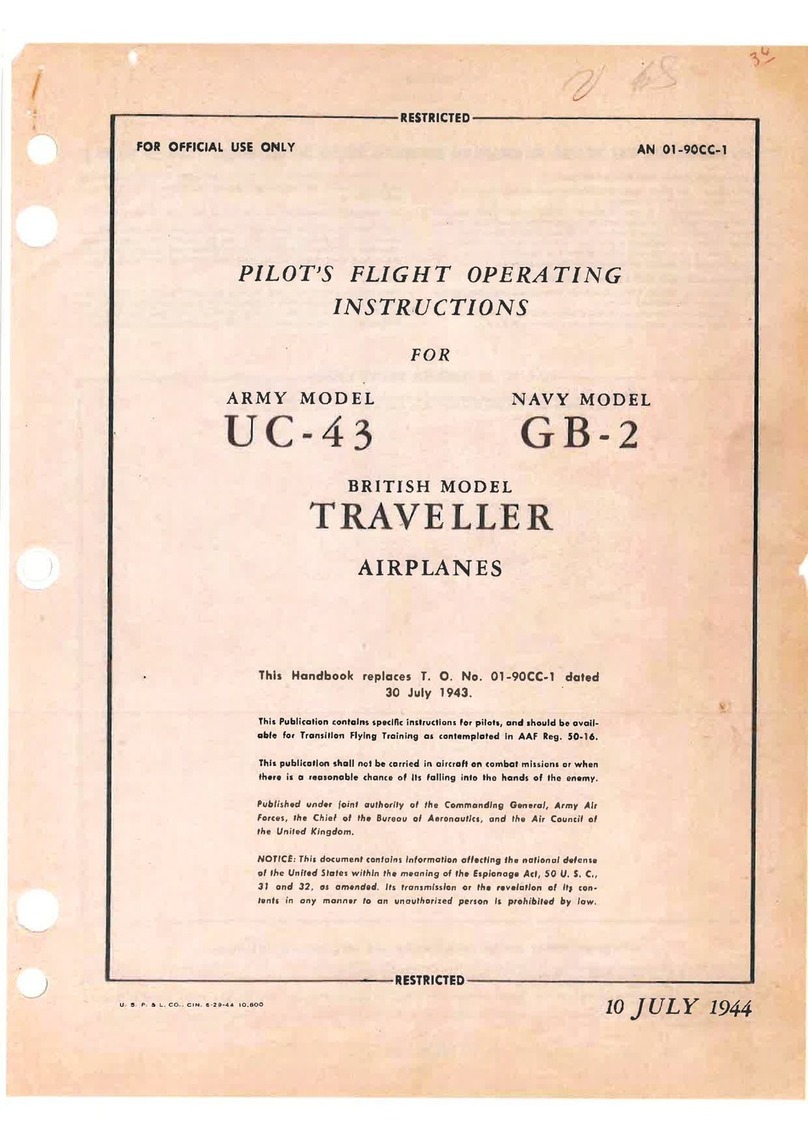
Beechcraft
Beechcraft TRAVELLER UC-43 1944 Operating instructions
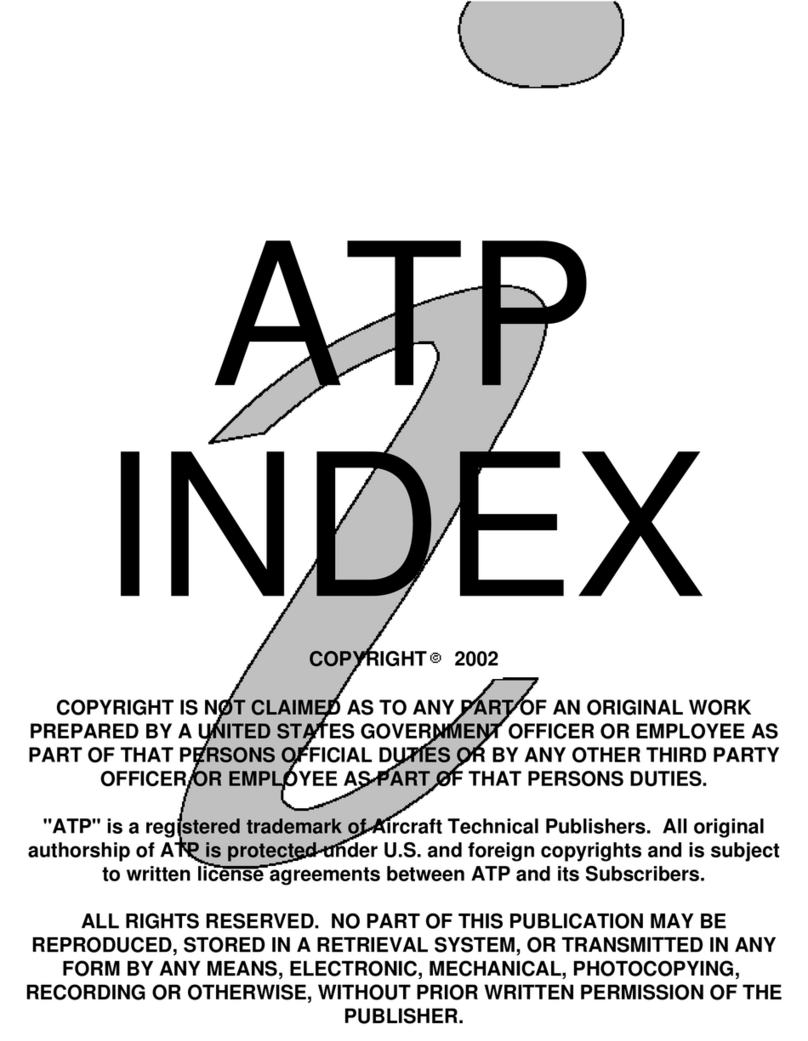
Beechcraft
Beechcraft Turbo-Baron 56TC Install guide

Beechcraft
Beechcraft Duchess 76 Technical specifications
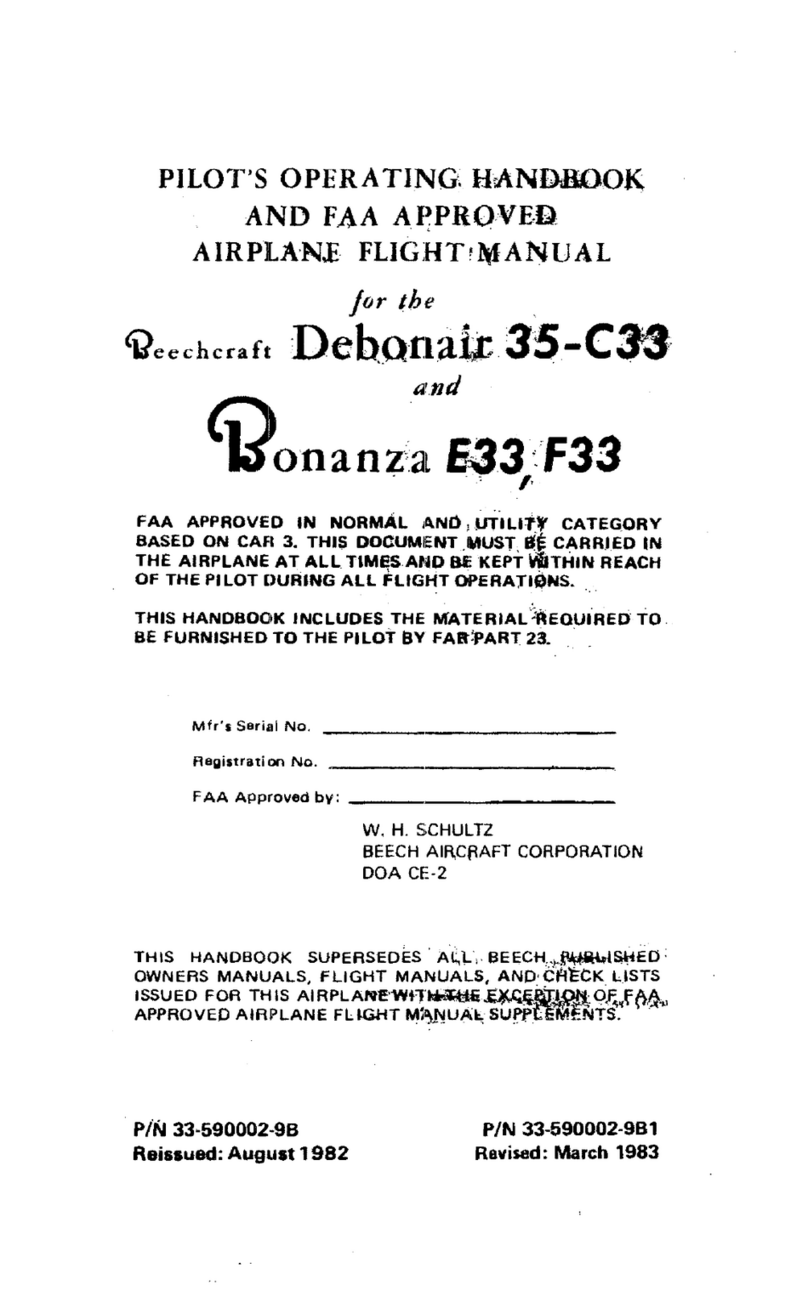
Beechcraft
Beechcraft Debonair 35-C33 Technical specifications

Beechcraft
Beechcraft Baron 58TC 1982 Quick start guide
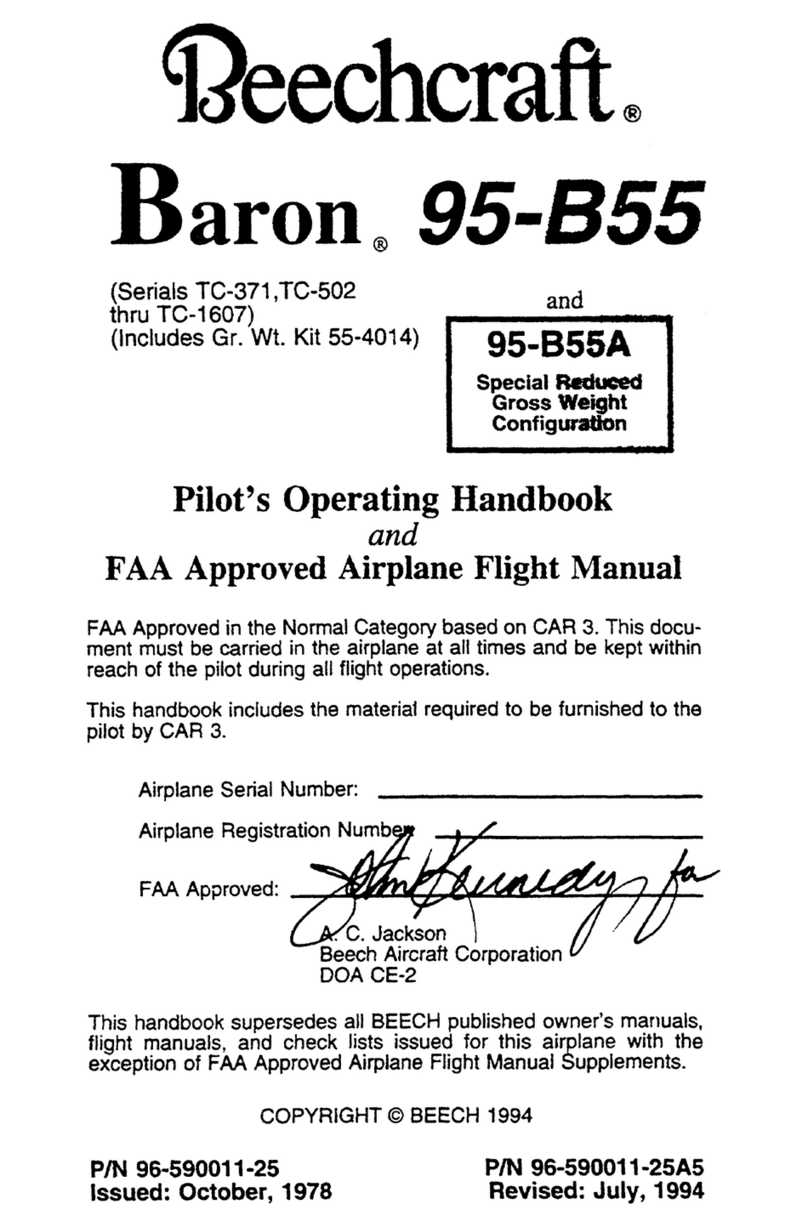
Beechcraft
Beechcraft Baron 95-B55 Owner's manual

Beechcraft
Beechcraft Pressurized Baron 58PA Quick start guide
